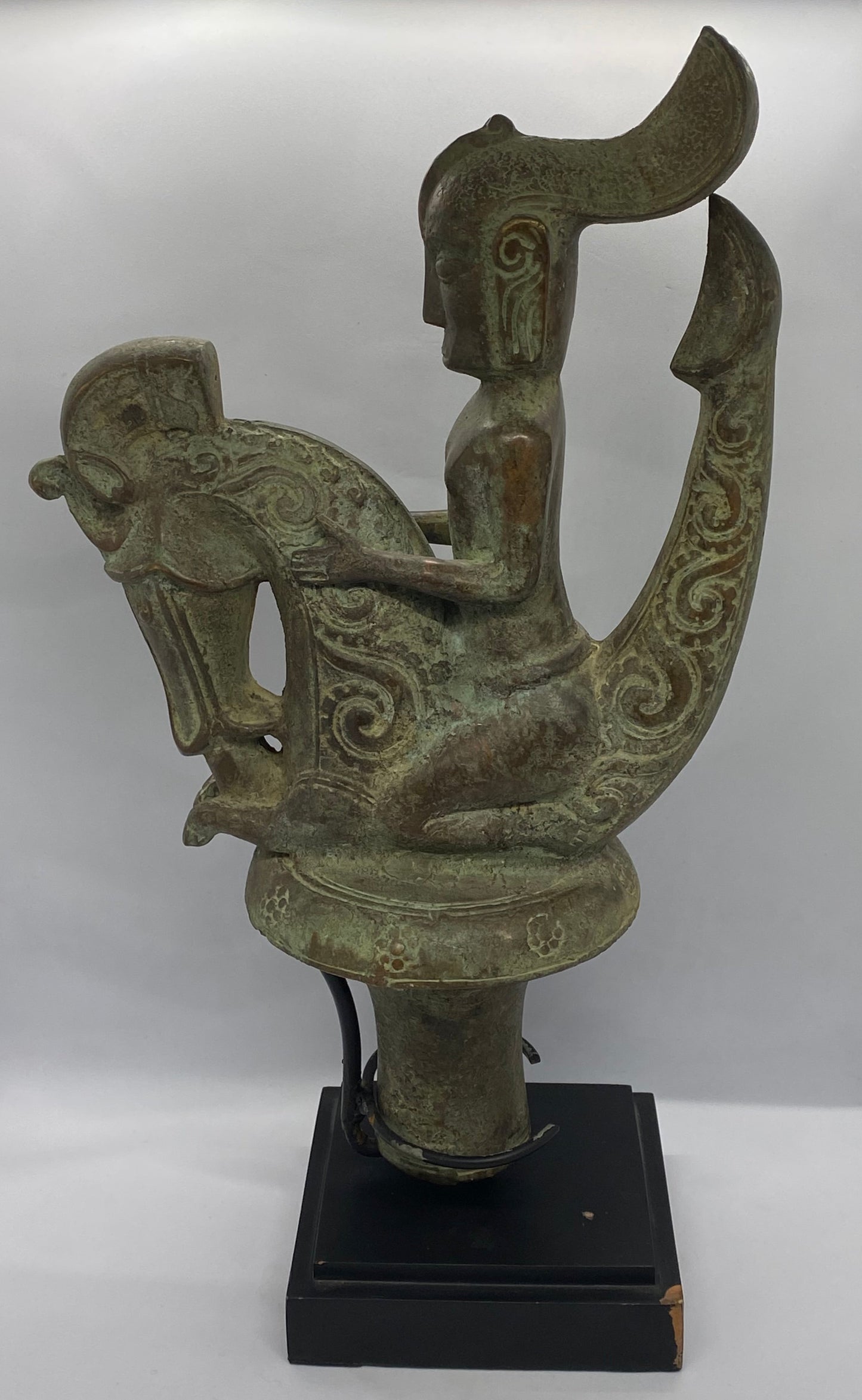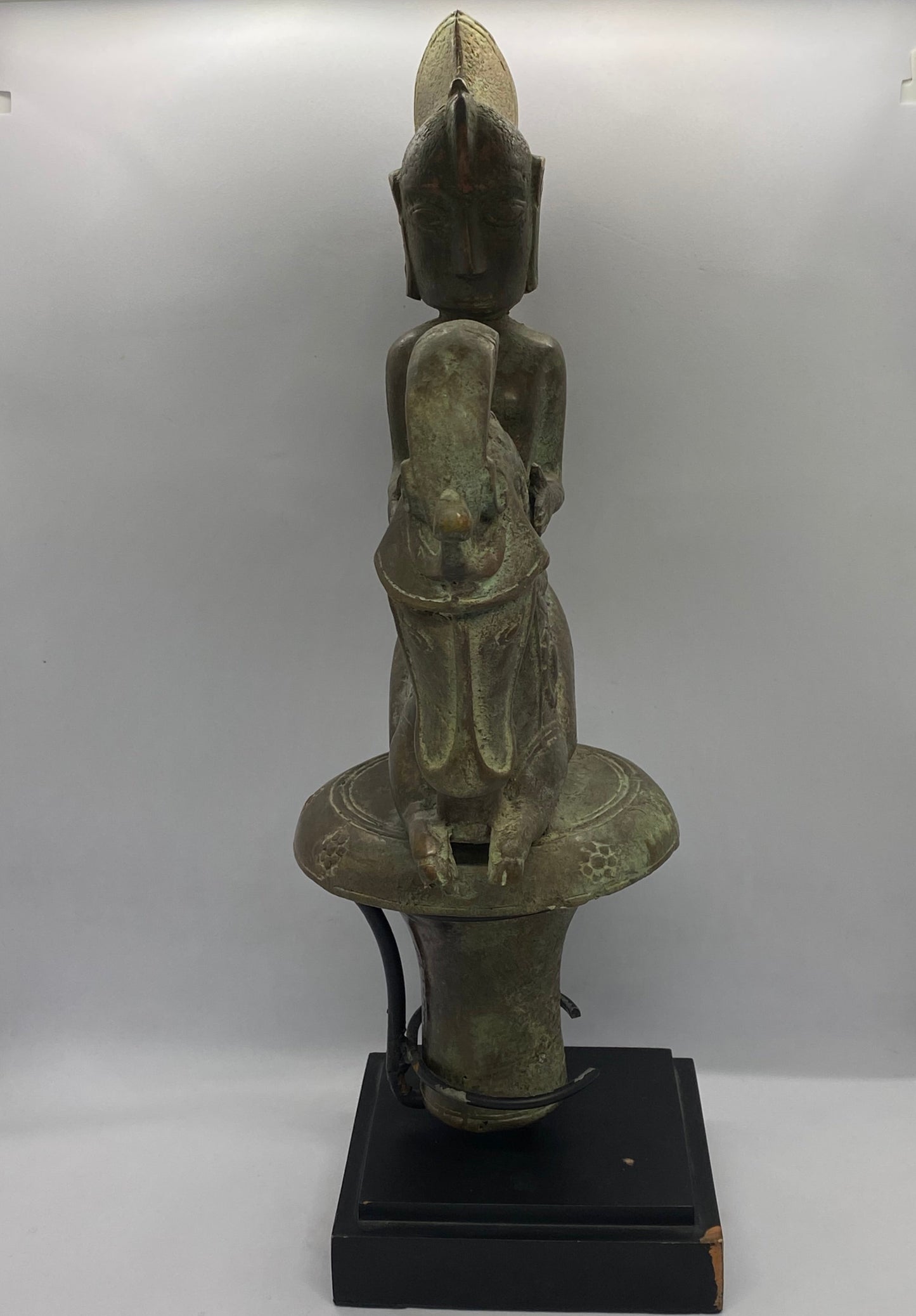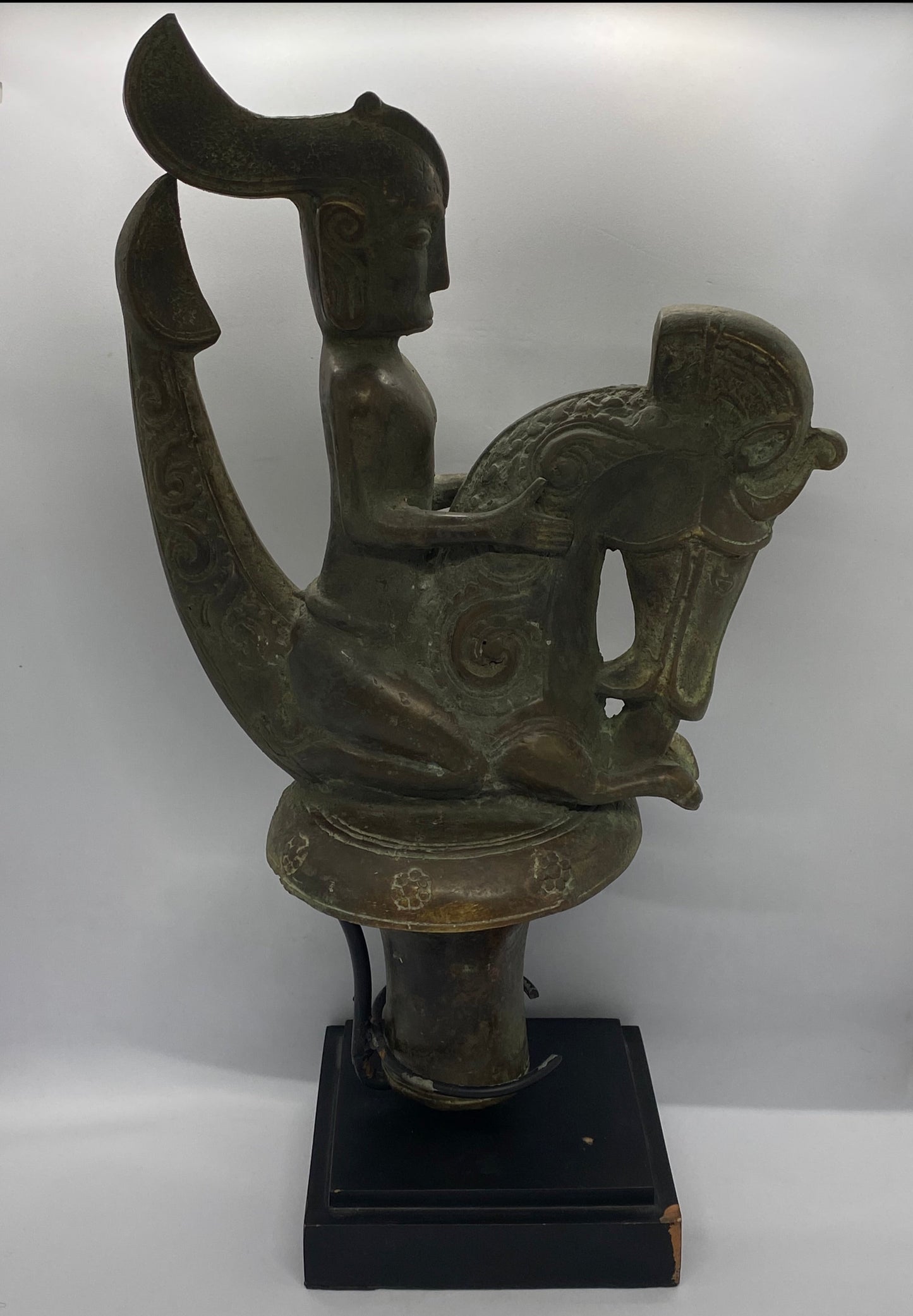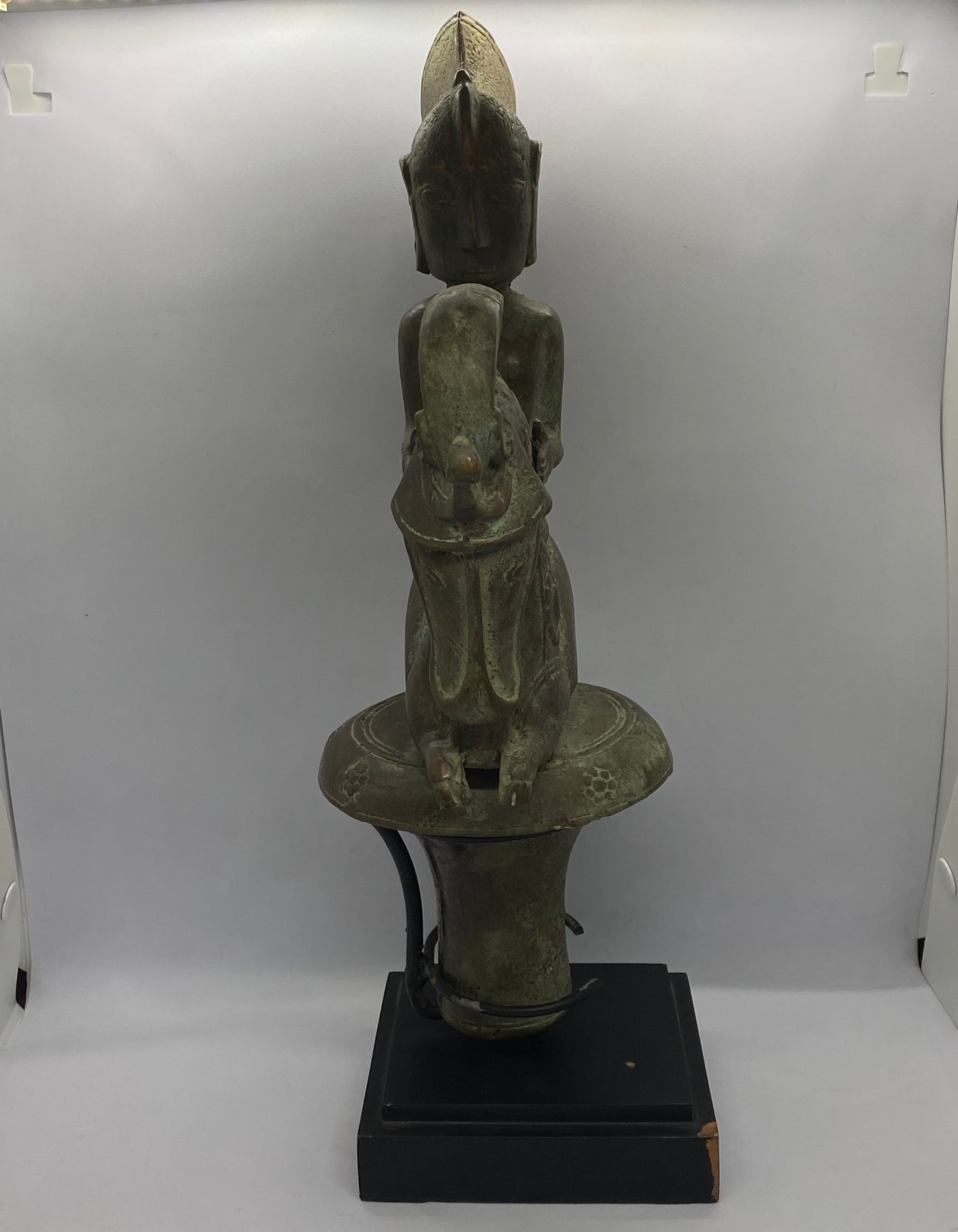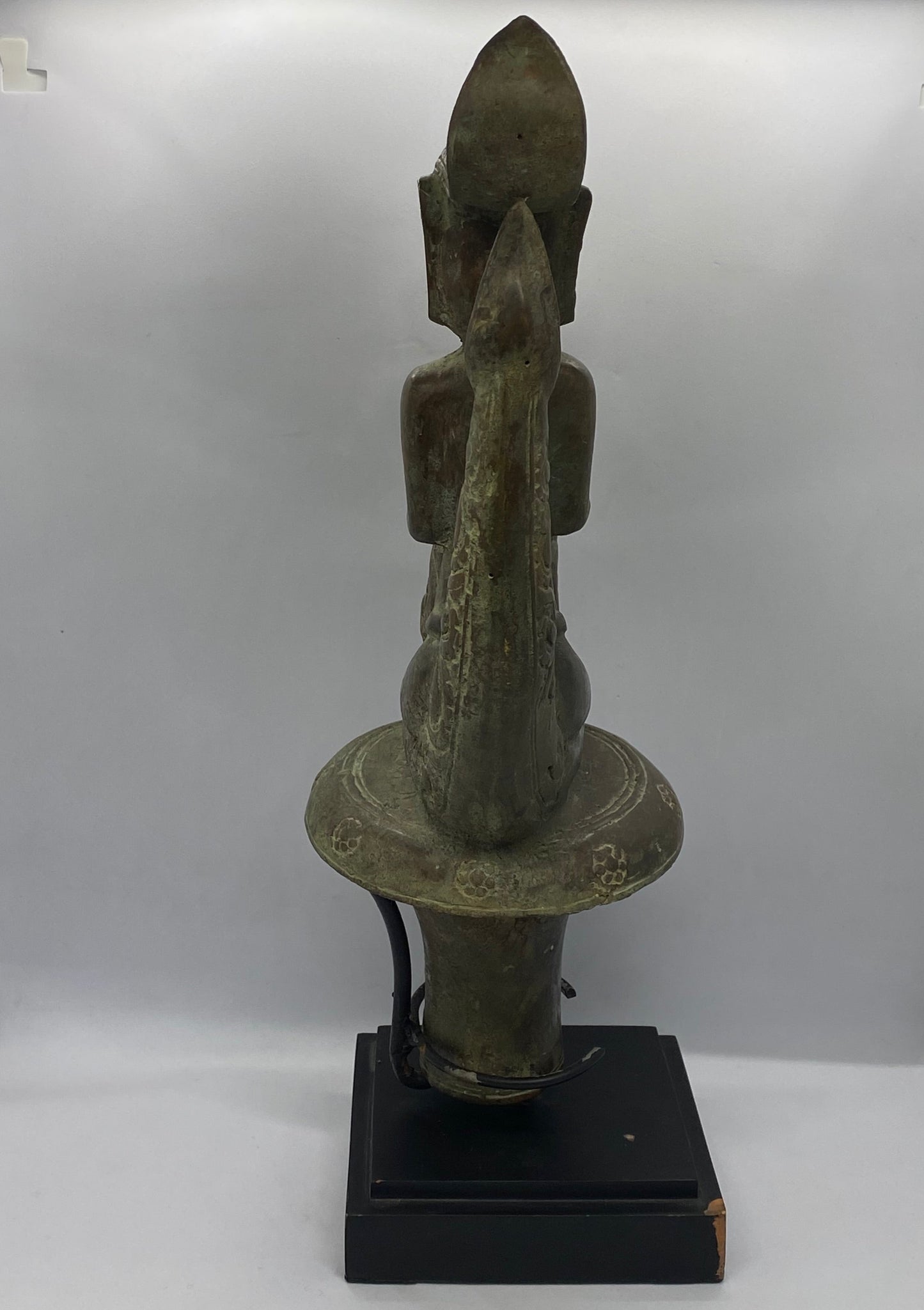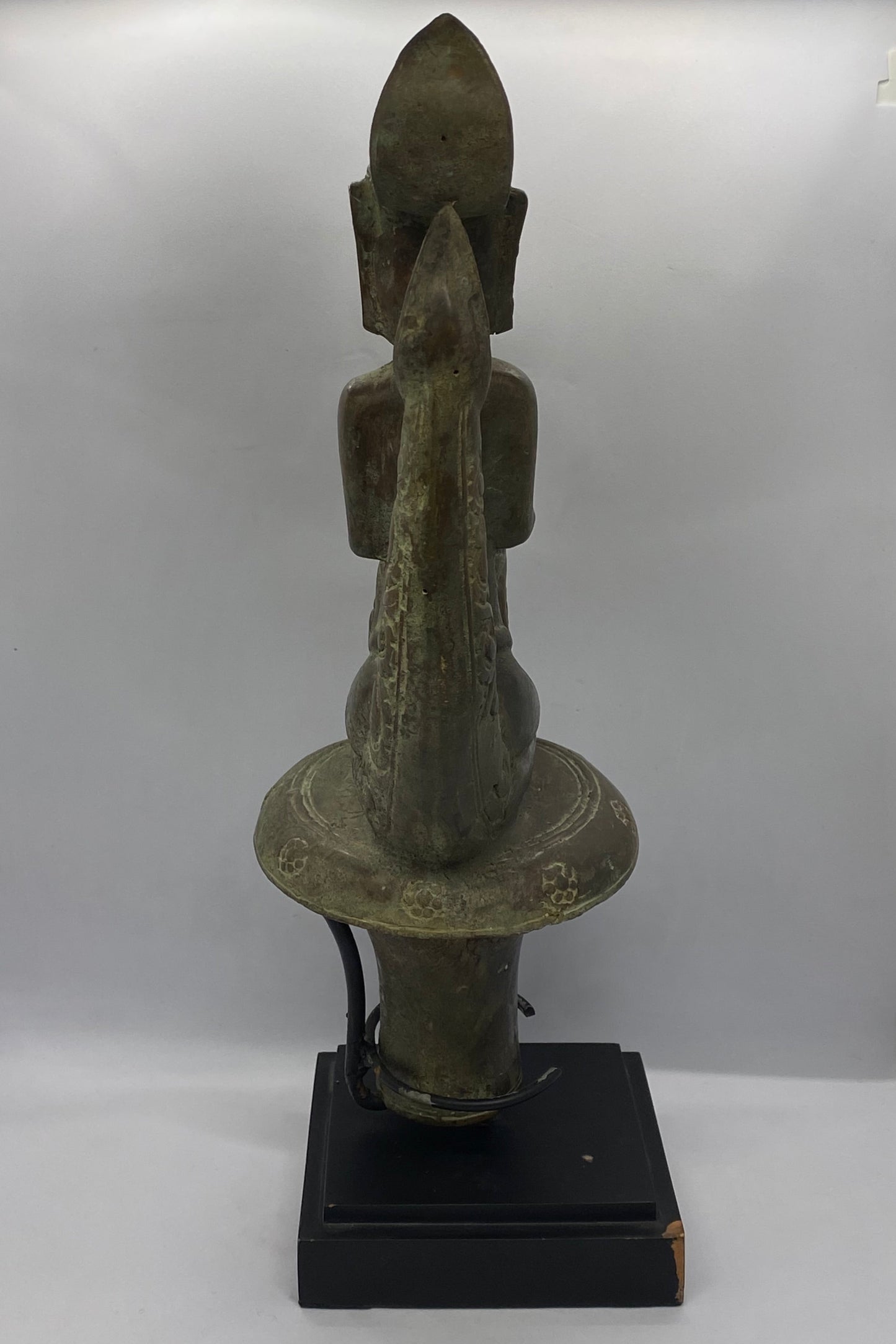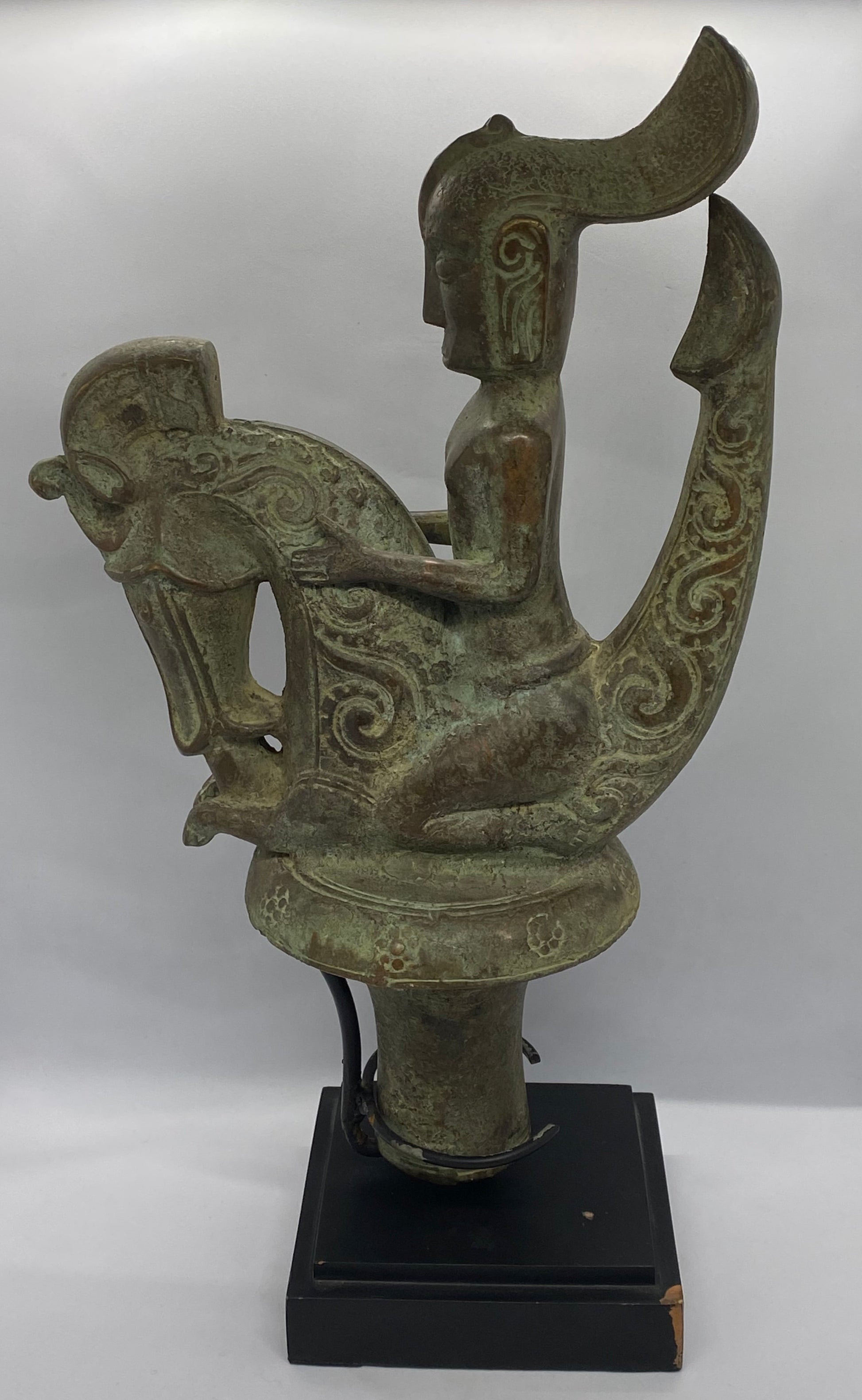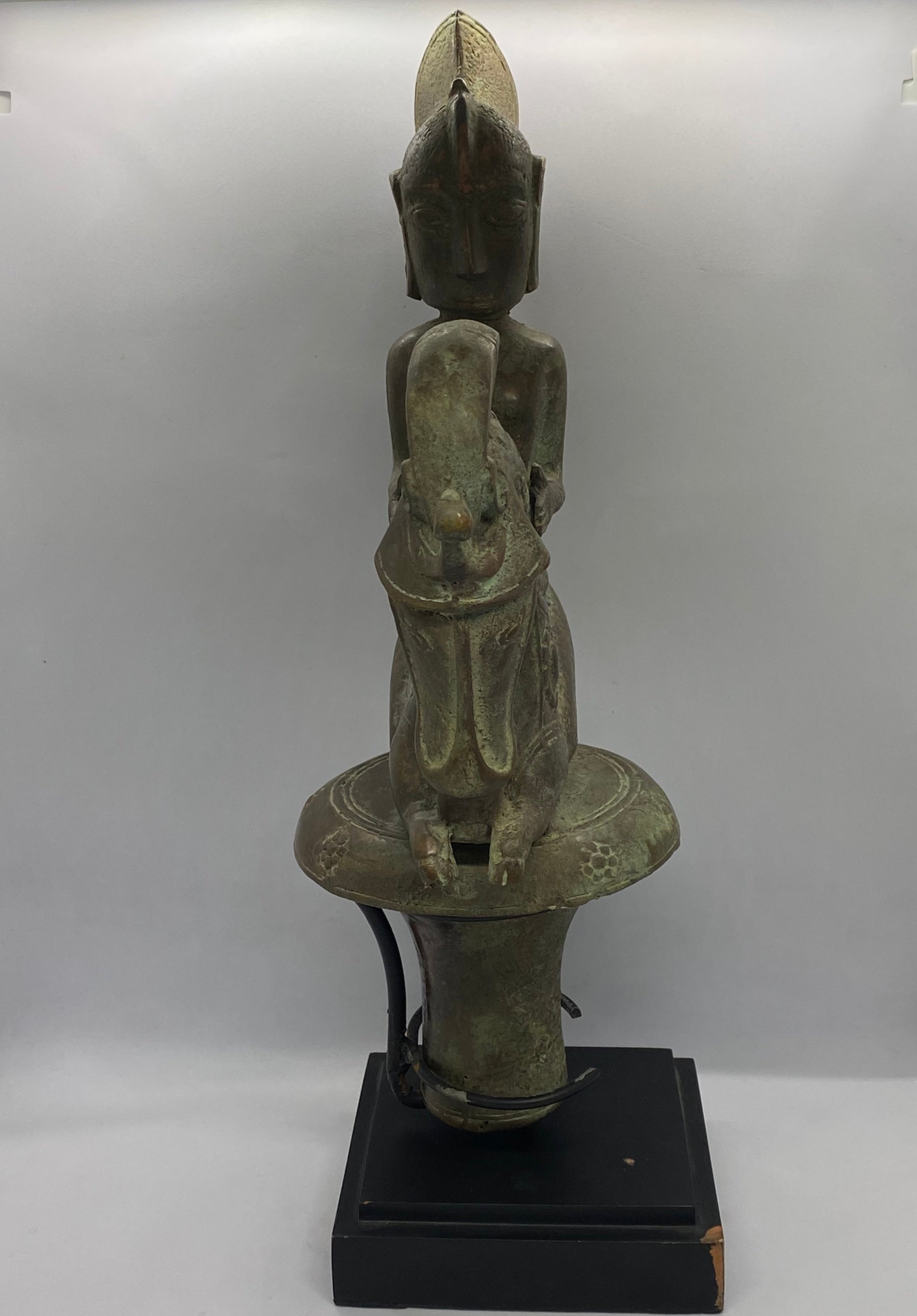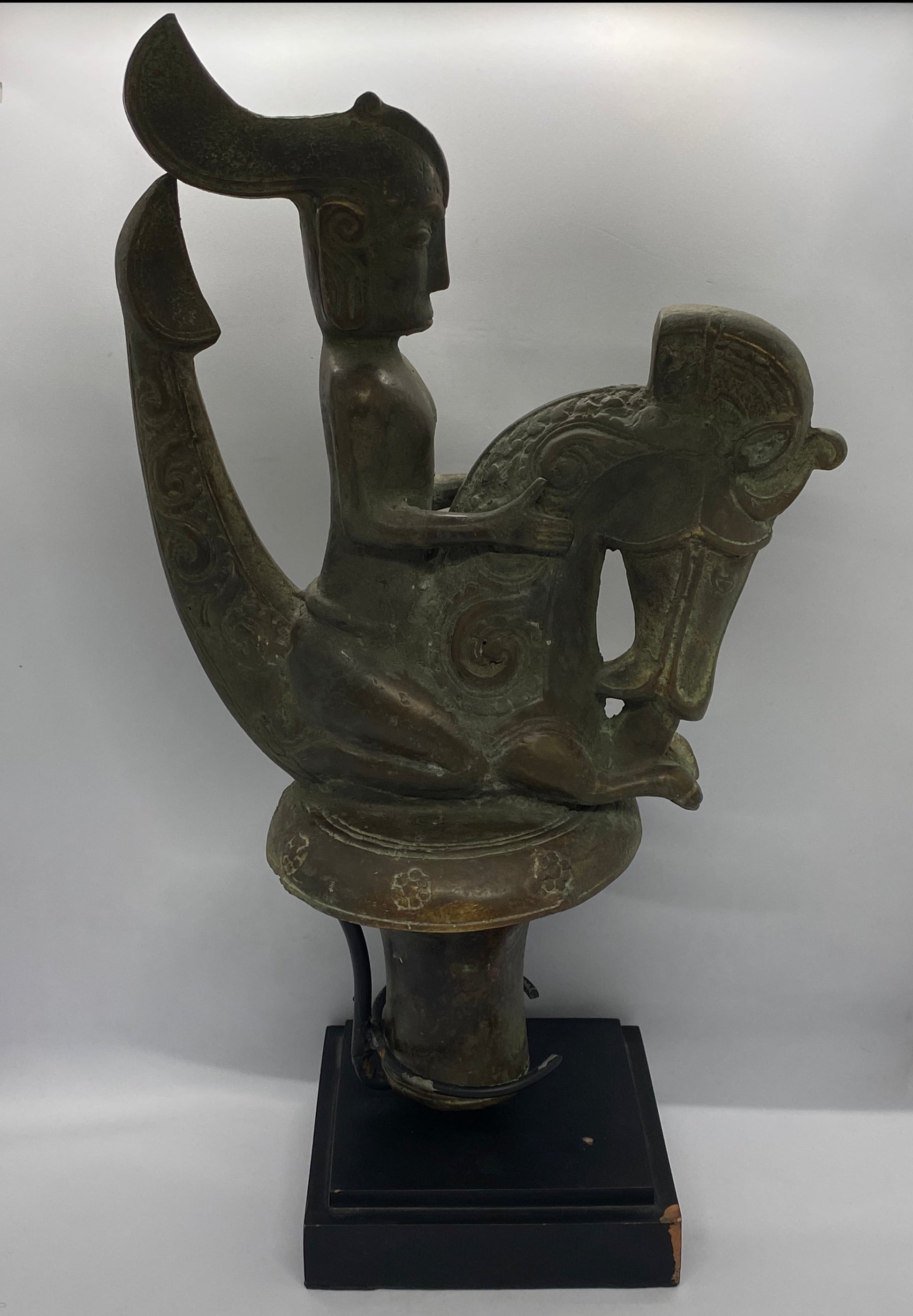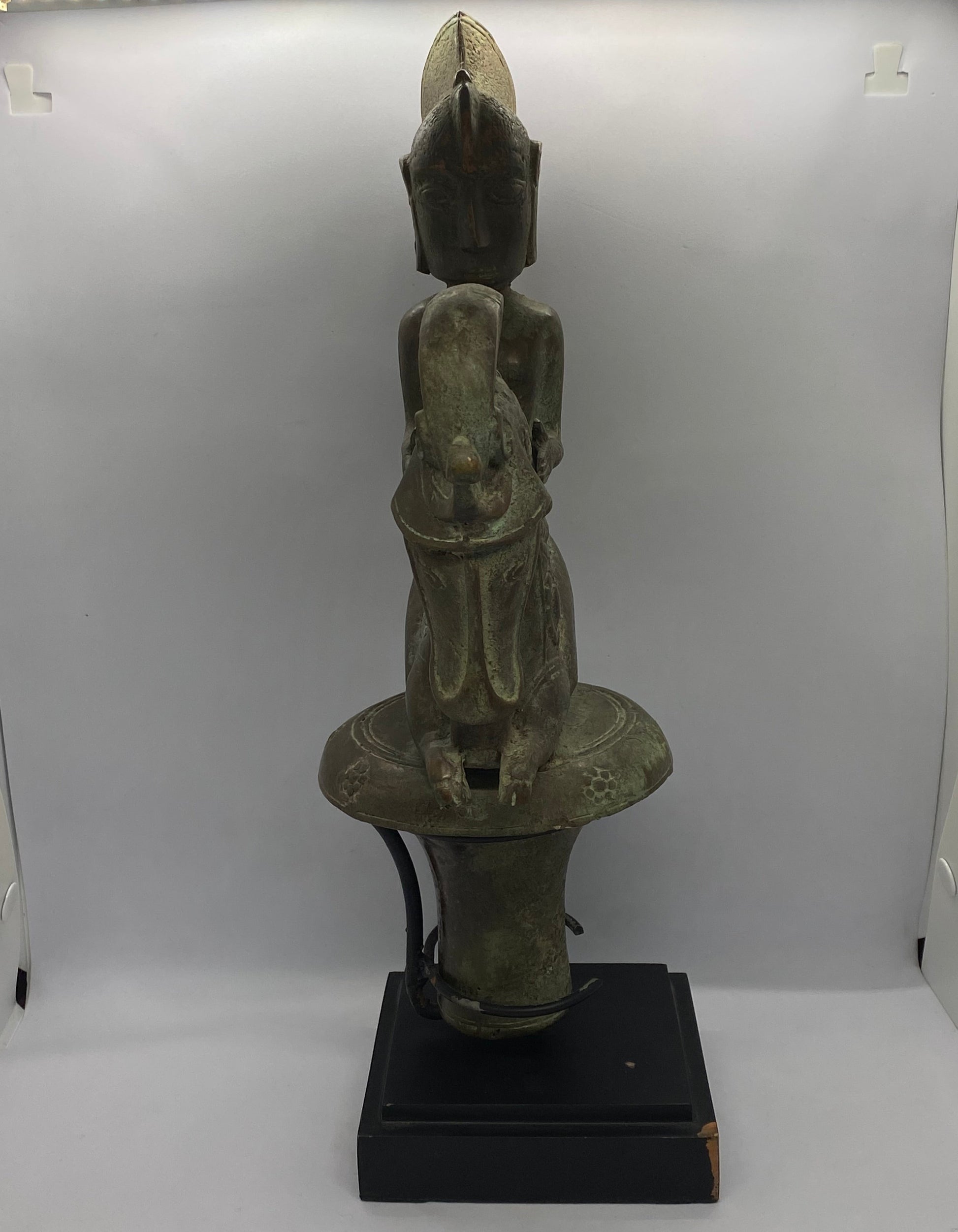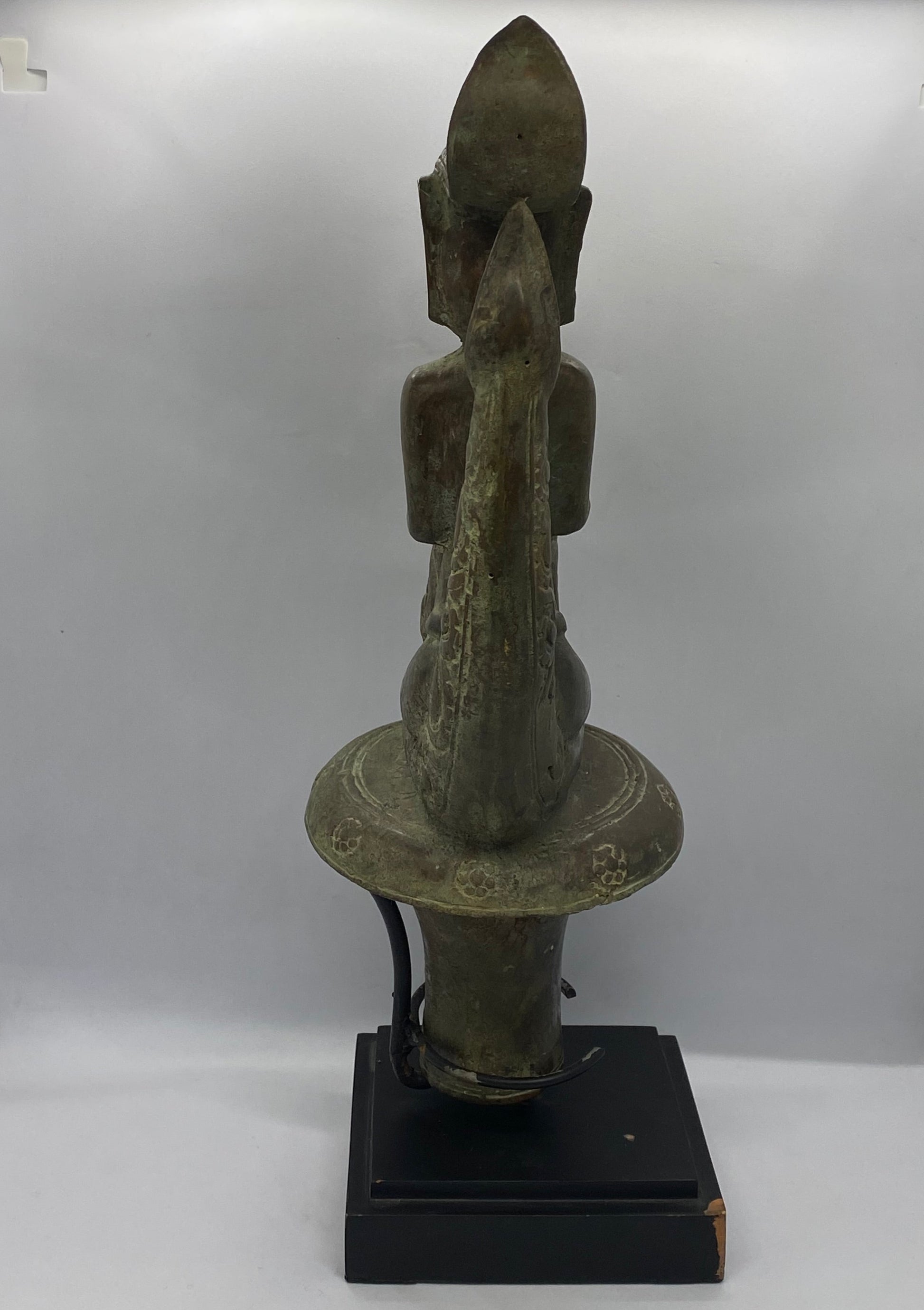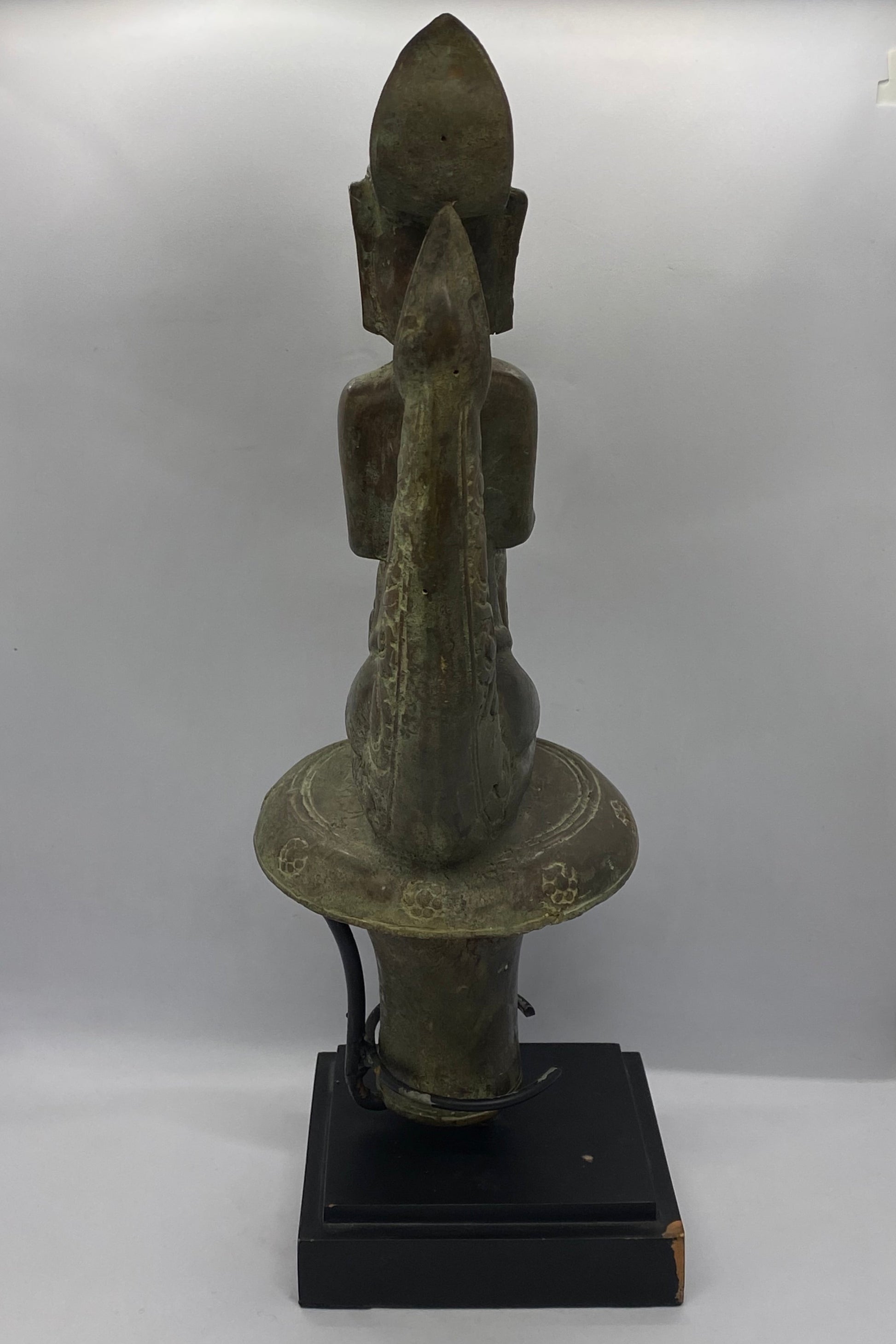cacheantiquessydney
Large Indonesian Batak Bronze Stopper Depicting Rider and Singa
Large Indonesian Batak Bronze Stopper Depicting Rider and Singa
Couldn't load pickup availability
This large bronze stopper from the Batak people of Indonesia circa 19th to 20th century is of unusual size. Certainly its stature denotes its importance as a ceremonial object, full of ritual power as well as immediate aesthetic purpose. It is rare to find older versions such as this one and in bronze- an excellent example of primitive art, with classic conception and well executed details. The dynamic pose of rider and singa, a horse like mythological figure, evokes a piece that is in the Met Collection.
Below is their caption:
Prior to the widespread adoption of Christianity in the early twentieth century, magic formed an important element in Batak religious practice. Religious specialists, known as "datu," performed both benign and malevolent magic using a variety of ritual paraphernalia. The most sacred and powerful of the datu's objects was the potion container, or "guri guri." These containers held "puk puk," a powerful substance made from a ritually executed human victim. Puk puk, it was believed, could force the victim's spirit to do the datu's bidding.
The containers themselves were often imported Chinese ceramics, but the Batak carved elaborate wooden stoppers to seal the mouths of the vessels. Many stoppers, such as this example, depict human figures riding horselike creatures called "singa." Combining aspects of horses, snakes, lions, and other animals, singa are mythical creatures associated with fertility and supernatural protection.
*it should be noted that puk puk or pupuk could also be made from less visceral but perhaps more noxious substances, such as poisonous leaves or soil that had seen conflict (paraphrasing Asian Civilisations Museum curator Henkel, 2014)
Price marked at $2800 AUD.
Very good vintage possibly antique condition with wear and patina commensurate with age and history of use.
Measurements:
Stand
12.5 x 12.5 side, height of 3.2cm
Figurehead measurements:
41 cm height
22.1cm width
References:
https://www.metmuseum.org/art/collection/search/316007
https://www.iias.asia/sites/default/files/nwl_article/2019-05/IIAS_NL69_48.pdf
Shipping & Returns
Shipping & Returns
